How To Winterize your Trees – Preparing for the Cold
by Simmy Parker
Plants and trees go through life cycles during the seasons and winter is a time of rest. Just like humans need sleep to determine our health and productivity, trees go through a dormancy period in the winter that betters their health. Essentially, this is a time of physiological and structural changes within the tree, and they need our help to survive this season and get off to a healthy start in the spring. With this article we will teach you how to prepare your plants and trees for winter.
While mature trees with thick, corky barks are self-sustaining, the younger and less-established trees need our help to keep them watered and protected during the vulnerable season. Each season affects how the tree will thrive in the following season: for example, spring and summer conditions affect their ability to survive in winter, and any summer and fall drought conditions render the tree vulnerable to pest issues and poor health. You will have to insulate, fertilize, water, wrap and prune the trees in the fall. Winter makes it difficult to find moisture, so the key to their survival is by giving them adequate moisture before winter comes, so they have a reserve of water to use during the dry periods.
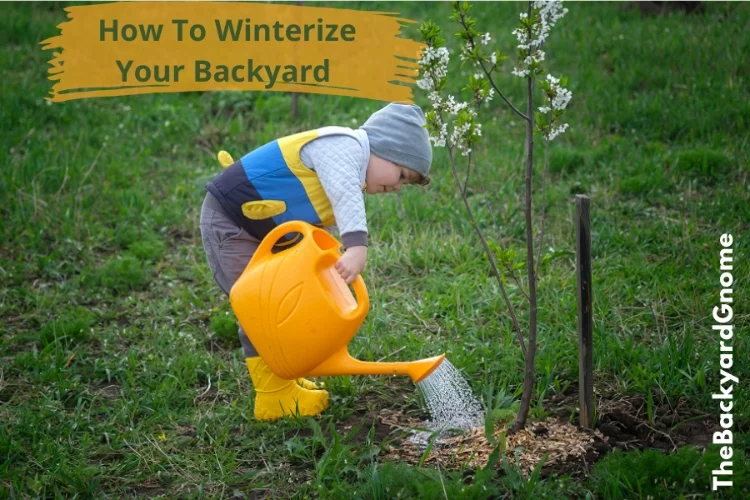
1. Insulate
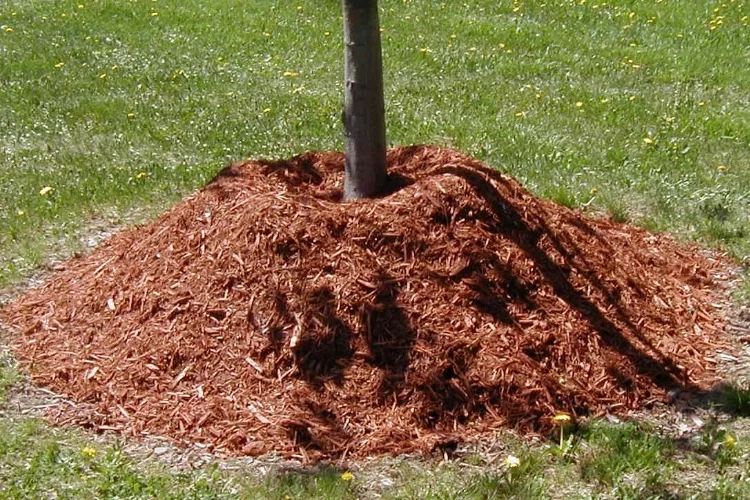
Firstly, you will need to protect the root systems of young plants and trees, which can be done through laying a 2-3" layer of mulch on top of the soil, along the dripline. The dripline is measured from the base of the trunk out to the edge of the outer branches (the widest possible diameter from where the tree could drip water).
Mulch can be made of natural materials like wood chips, leaf compost, or sawdust. You'll notice our reviews of several mulching leaf blowers, which can be very handy for this exact purpose: cleaning up the tree's fallen leaves, mulching them, and feeding them back to the tree.
This layer will insulate the roots when the temperature drops, reduce soil evaporation, and improve water retention. Mulch also acts as a weed deterrent and will help retain moisture come growing season. You can also lay a tree circle that will act as a barrier and stop weeds growing: covering this layer with mulch will help prevent problems at root level.
2. Water
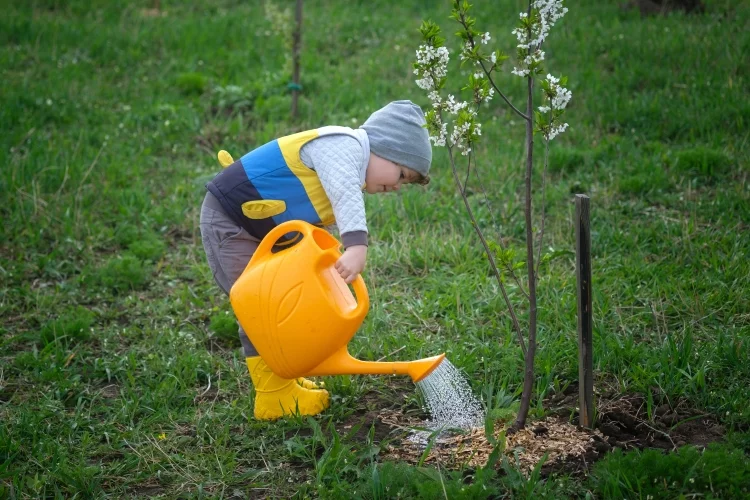
Especially during periods of low rainfall, and in particular for newly planted trees, you must provide supplemental watering. The rule is 5+5, meaning 5 gallons of water plus another 5 per every diameter-inch of the trunk. For more mature trees, 1 inch of water, given to the root zone every week, will be sufficient. Continue watering until the ground is frozen, so trees can use this moisture reserve to survive the winter months. If your winter season sees a rain or snowfall drought, you may have to water during the winter, during a warm day when the temperature is above 40 degrees Fahrenheit/4 degrees Celsius.
3. Fertilize
Just before winter, you'll want to provide the roots with a drink of micronutrients. Look for a 5-10-10 ratio. This low-nitrogen ratio will prevent new growth in the late season. You don't want new sprouts at this time of year. Follow the label directions for dilution, and water evenly over the root zone. Be sure to co-ordinate with your watering schedule so that you're not drowning the roots (and saving water!) This reserve of water and nutrients will keep the tree going during the dry and freezing winter months, and will enhance next season's growth with a fresh, healthy start to spring.
4. Wrap the trunks
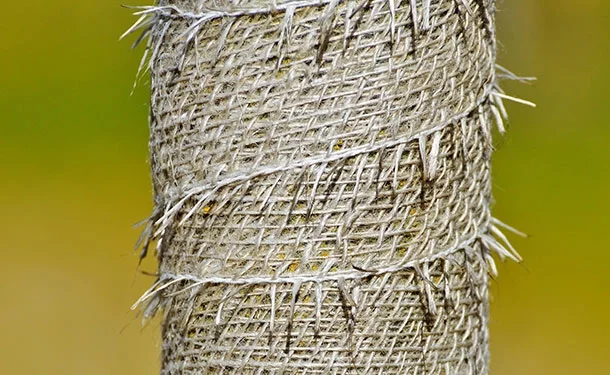
For trees with smooth bark and young trees that have not yet developed a protective, thick bark, you will want to wrap the bottom of the trunks with flexible tree wrap. You'll have seen this white wrap at the base of tree trunks around your neighborhood. This tree wrap serves two purposes:
- It stops animals nibbling on the bark. Rabbits in particular will chew bark once the ground hardens because grass is no longer edible for them. However, loss of bark leads to life impairment for the tree.
- This wrap will reflect the sun's rays, thereby protecting the tree. If a tree trunk is not wrapped, it will absorb a lot of sunlight and warmth during the winter days, and then go into shock at night due to the sudden temperature drop. This extreme fluctuation leads to sunscald and frost cracks.
You'll want to leave this wrap on until the last freezing temperature, and remove in the spring.
5. Prune
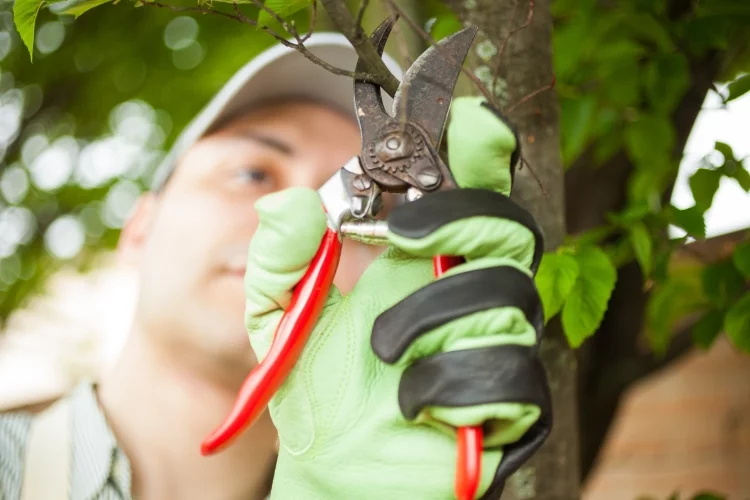
You should, of course, remove all diseased or dead branches so as to prevent the disease spreading, and to deter pests making a home there. You can do this limited pruning up to late fall or early winter.
As long as you make a schedule for yourself and follow these easy guidelines, your trees will be well nourished, watered, and insulated for the winter season.
 |
 |
 |
 |

About Simmy Parker
Simmy is an outdoor expert who loves to spend time in the wilderness. She received a BS degree in Civil Engineering at Sacramento State University, and has put her skills to use by helping design and build some of the most impressive structures in the world. However, Simmy's true passion lies in sharing her love of nature with others, and she spends much of her free time leading hikes and teaching people about the flora and fauna that can be found all around them.
Thoughts on "How To Winterize your Trees – Preparing for the Cold"
 |
 |
 |
 |
Backyard Stuff
You can Get FREE Gifts. Receive Free Backyard Items here. Disable Ad Blocker to get them all now!
Once done, hit anything below
 |
 |
 |
 |